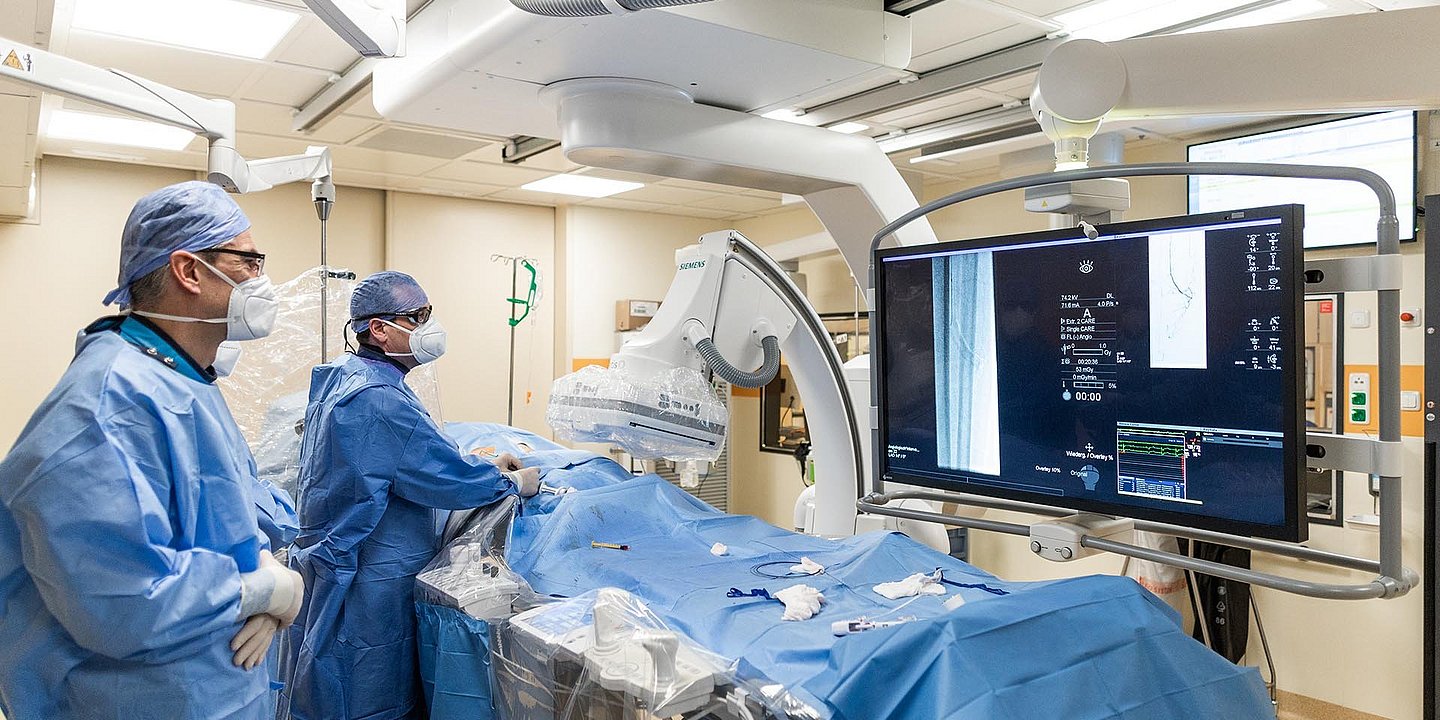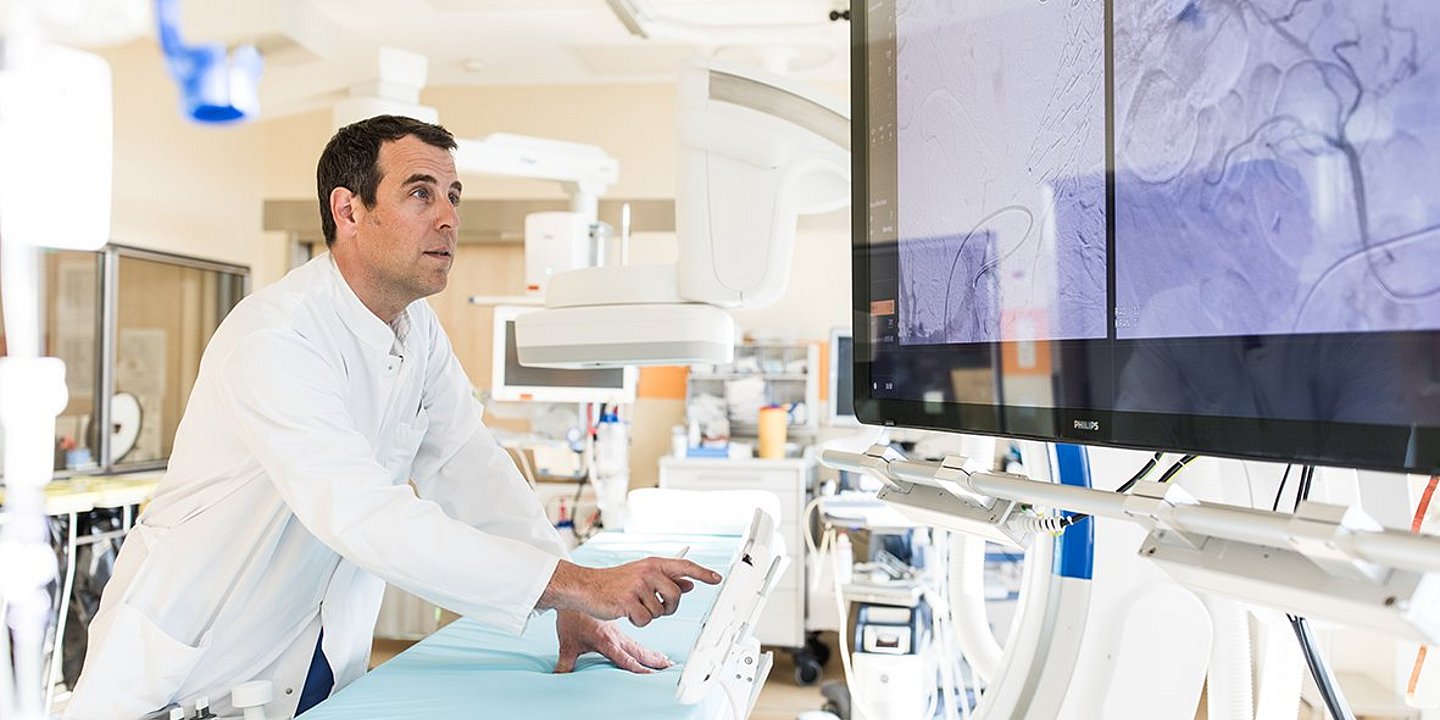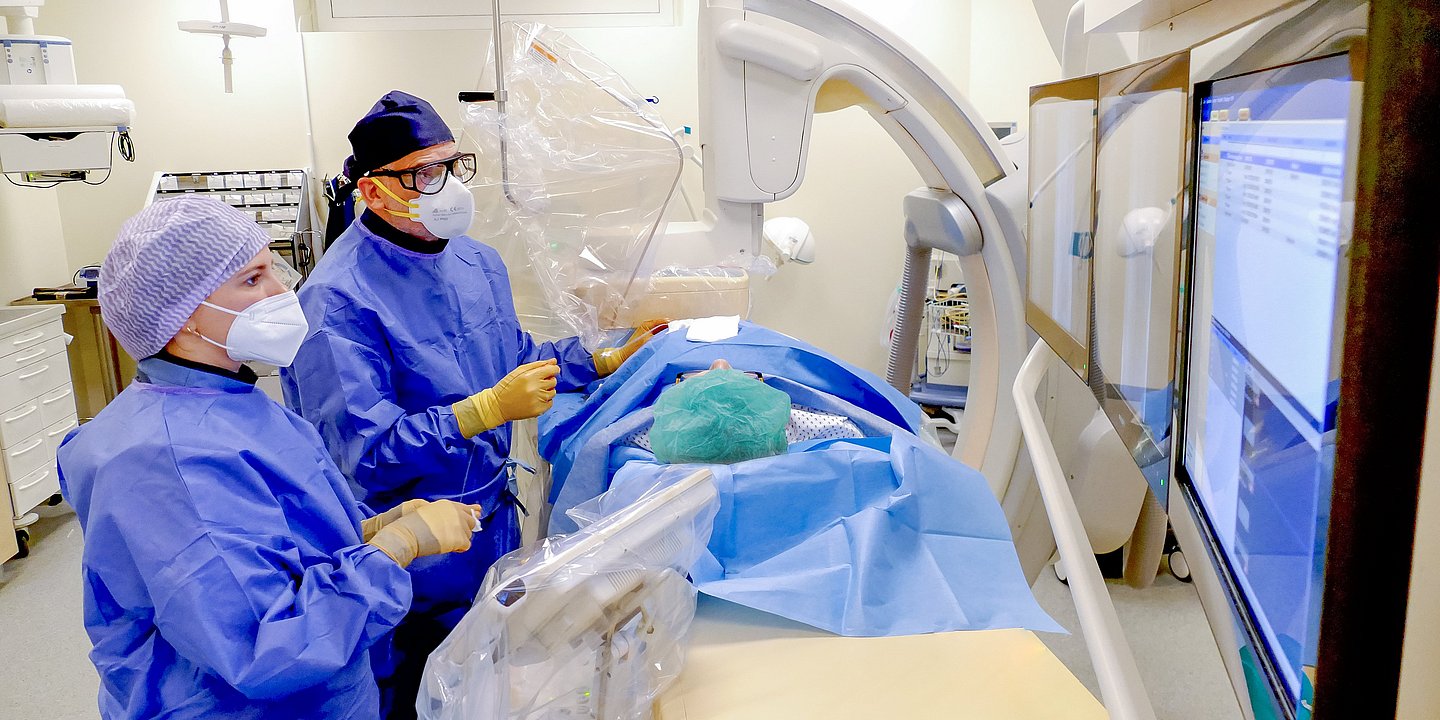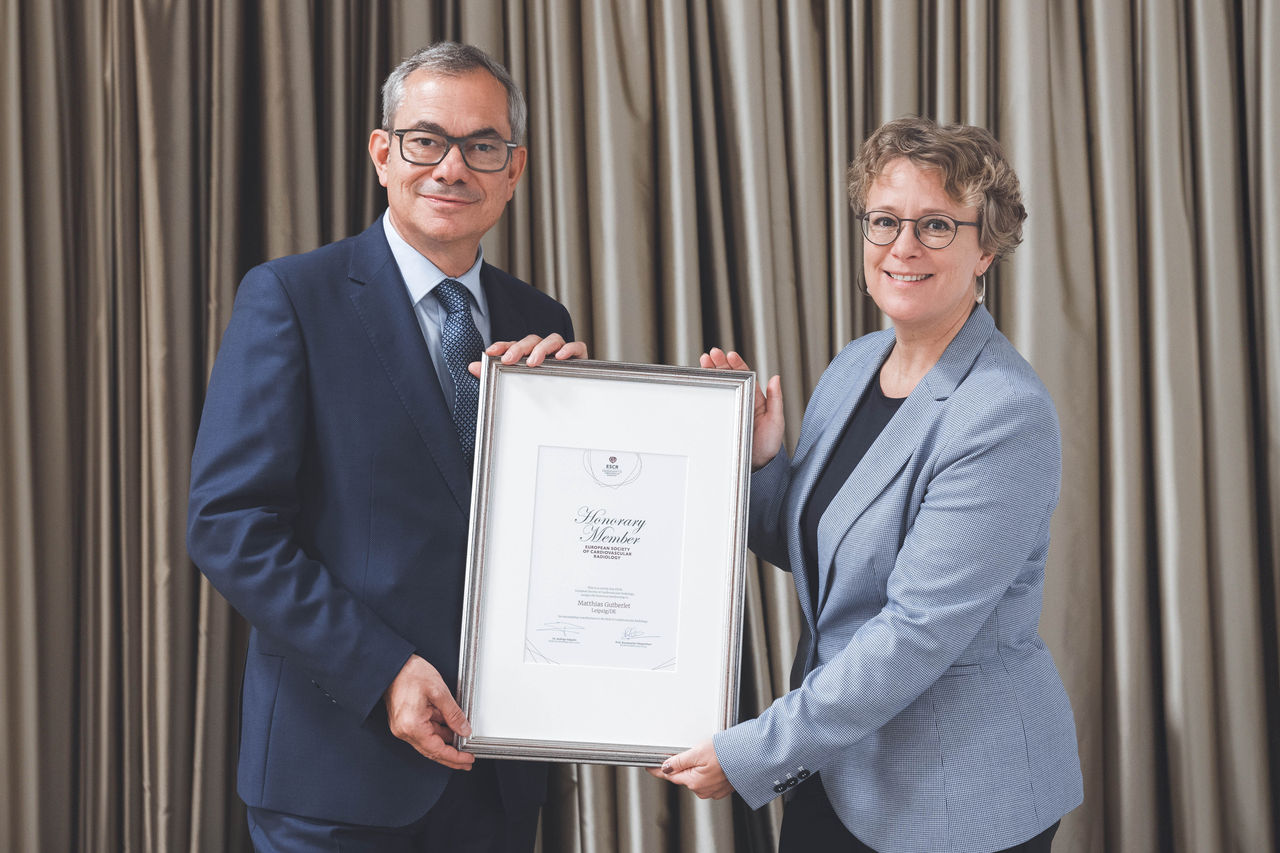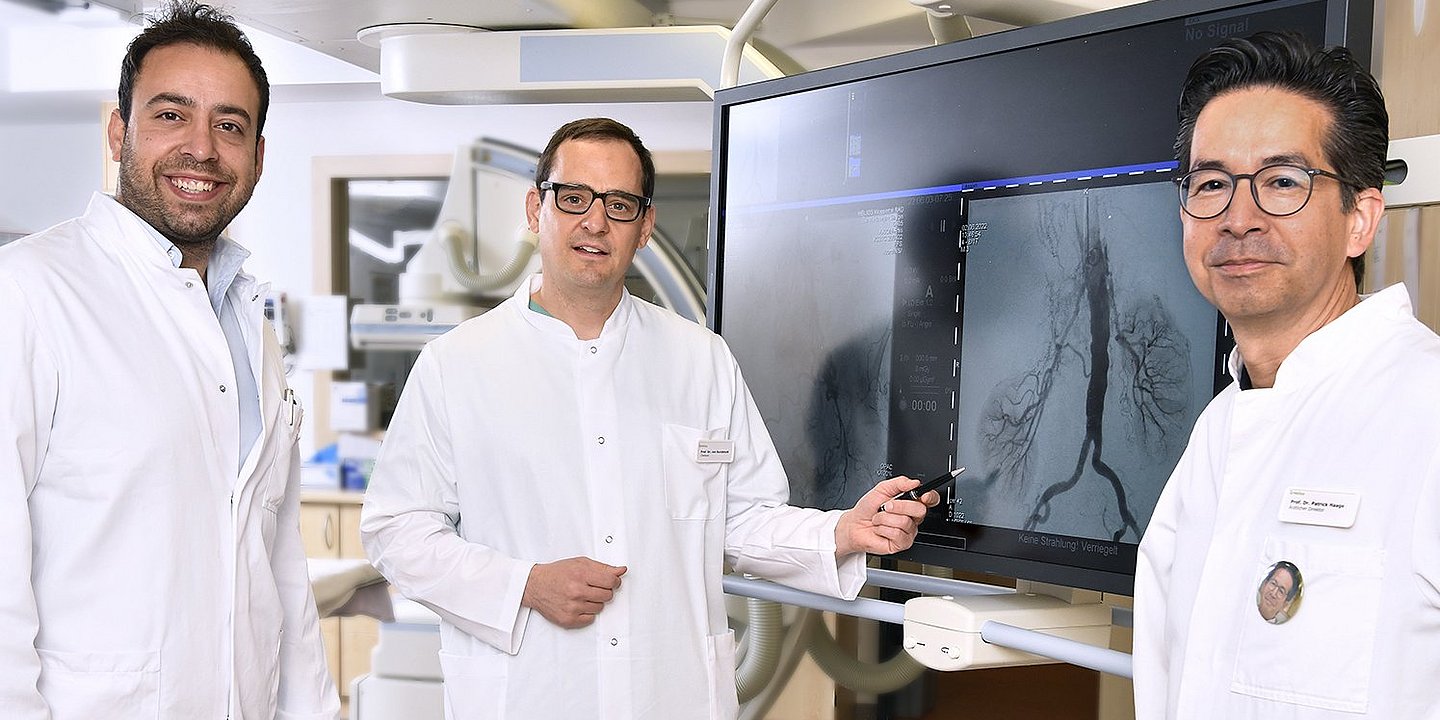
Helios University Hospital Wuppertal: Using new radiologists' tools to fight cancer
Helios University Hospital Wuppertal has successfully achieved a new certification, which proves that all quality requirements for the provision of interventional oncology services are met at the required high level.
IASIOS Certificate for Interventional Radiology Demonstrates High Treatment Quality
Helios University Hospital Wuppertal is the third center in Germany to be certified as an interventional oncology registered center through IASIOS (International Accreditation System for Interventional Oncology Services). This certification, with broad international support from the relevant national and international medical societies, is based on the standards of quality assurance in interventional, minimally invasive oncology.
Interventional radiology" is the term used to describe a sub-specialty of radiology that does not involve diagnosis, but rather various minimally invasive, i.e. catheter-guided, treatment methods using radiological technology.
Prof. Patrick Haage, Director of the Radiology Center explains:
"My department offers what is known as "interventional radiology", which are various gentle, non-surgical and well-established procedures that open up new treatment options for many cancer therapies. The interventions are an alternative to surgery for numerous patient:s, or they are used as a pretreatment or adjunct to therapy."
Dr. H. Saygin Tuna, Section Head of Interventional Radiology adds,
"With this accreditation, we have jointly demonstrated how we can meet high quality standards in a patient-oriented manner. In addition to the already well-known imaging-guided therapies such as pain therapy by drug injection in the spine or minimally invasive cement filling of sunken vertebrae (vertebroplasty), interventional radiology expands the range of therapies with numerous new methods for cancer treatment."
Treatment of liver tumors and metastases.
Transarterial chemoembolization (TACE) is a method used for liver tumors. It involves using a catheter to deliver high doses of chemotherapeutic drugs specifically to the tumor and blocking the tumor's feeding arterial blood vessels by inserting tiny beads via catheter. This is used when chemotherapy is not effective or for inoperable tumors when the patient's general condition permits. The main goal is to improve the patient's quality of life by using a low-complication approach, delivering high doses of chemotherapeutic agents locally to reduce tumor size and growth.
Thermal obliteration of tumors
In so-called radiofrequency ablation (RFA), a special needle is inserted into the tumor, e.g. of the lung, bone, kidney and liver, under CT control and heat is generated at the tip of the needle with the aid of electricity. The tumor tissue is destroyed by the heat. The use of this therapy depends on the tumor size. Cryoablation (CRA), on the other hand, uses cold gas to destroy the tumor cells, i.e., by freezing them. The surrounding tissue is spared and the kidney remains functional. In addition, the procedure is a good alternative to surgery for patients who cannot undergo surgery.
For organ-preserving treatment of benign lumps of the uterus (fibroids), so-called myoma embolization is suitable. Here, too, the blood supply to the fibroids is interrupted by injecting beads via catheter, so that the fibroids obliterate.
Against the enlarged prostate
The therapy of one of the most common diseases in men is prostate artery embolization (PAE). The symptoms range from difficulty emptying the bladder properly to nighttime or sudden urges to urinate. Under local anesthesia, doctors insert tiny beads through catheters into the fine prostate vessels, which reduce the blood supply to the tissue. As a result, shrinkage of the prostate tissue takes place.




